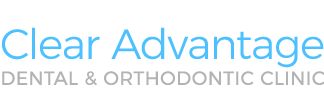BOTOX® TREATMENT FOR JAW TENSION & TMJ
Botox is commonly used as an alternative treatment for temporomandibular joint disorders. When introduced into the afflicted facial muscles, Botox can eliminate headaches and can even minimize lockjaw. Although treatment for these conditions is in the experimental stage, evidence suggests that Botox is extremely effective.
HOW IT WORKS
The temporomandibular joint (TMJ) is located where the jawbone meets the skull, and is used for eating, talking and swallowing. If the TMJ becomes displaced or distressed through teeth grinding, individuals will often suffer severe tension headaches accompanied by sharp jaw pain. Botox relieves this tension by rendering muscles incapable of engaging with unconscious jaw movement.
Typically, treatment for TMJ and jaw disorders is quick and effective. Because this is a non-surgical procedure, Botox injections can be administered in a doctor’s office without the need for a hospital visit. Most patients experience improvement within two days of treatment, although complete relief may take upwards of one week.
TMJ BOTOX® THERAPY – AFFECTED AREAS
Botox treatment for TMJ therapy will not affect anywhere else in your body. Injections are administered primarily in the temporalis, frontalis and masseter but additional sites may be injected with depending upon the severity of symptoms.
HOW LONG IS THE PROCEDURE?
The length of Botox treatment depends upon the number of injections required as determined by your physician. Most treatment procedures last 10-30 minutes.
IS BOTOX® TREATMENT PAINFUL?
The brief discomfort associated with the Botox Treatment is due to the injections. Many patients have described the sensation as reminiscent of a small bug bite. Injection pain can be reduced by numbing agents like cold packs or anesthetic creams. In extreme cases where a fear of needles exists, your doctor may recommend Nitrous Oxide.
WHAT CAN I EXPECT AFTER TREATMENT?
Muscle tenderness will begin to dissipate almost immediately after treatment. Wrinkles will begin to disappear within 24-48 hours and may continue to diminish for upwards of one week after the procedure.
Sometimes, mild bruising and temporary numbness or redness can accompany treatment. You won’t look 20 years younger but you WILL look more natural and relaxed.
*A small percentage of patients treated with Botox report no noticeable reduction of wrinkles.
RECOVERING FROM BOTOX® TREATMENT
Because Botox Treatment is non-surgical and non-invasive, most patients are able to return to normal activities immediately. However, it’s advisable to avoid physical activity, standing for extended periods or rubbing the injection sites, as this may cause the toxin to spread to other muscles.
THE RISK OF BOTOX INJECTIONS
Although very infrequent, side effects occasionally present with Botox treatment. Most commonly, they include headaches, flu, respiratory infection, temporary eyelid droop and nausea. Less commonly reported effects include discomfort, redness and muscle weakness. All occur within the first week.
Bruising can sometimes appear at the injection site. High-use areas like the lips are more susceptible than areas like the forehead but Botox injections around the mouth are less frequent in TMJ treatment. Another limitation of the TMJ Botox procedure is the possibility that the body will develop antibodies, rendering the treatment less and less effective. This can be delayed by employing the lowest dose possible over the longest intervals of time. Botox treatments should be avoided during pregnancy and lactation.
